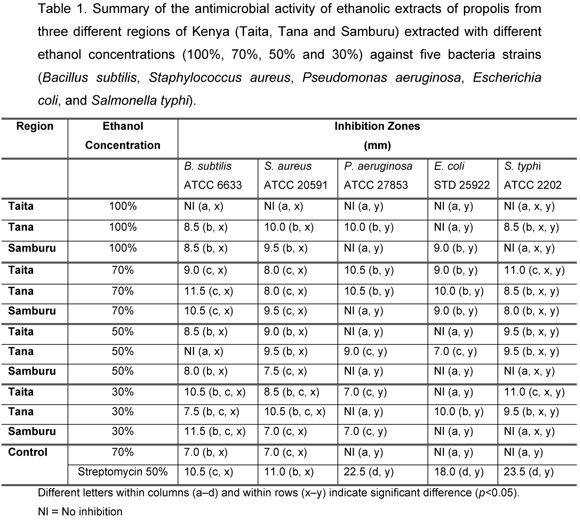The present study aimed at investigating the susceptibility of the microorganisms Pseudomonas aeruginosa, Salmonella typhi, Escherichia coli, Staphylococcus aureus, and Bacillus subtilis to ethanolic extracts of propolis (EEP) from three regions of Kenya (Taita, Tana and Samburu). Propolis was extracted using four different concentrations of ethanol: pure, 70%, 50%, and 30%. Ethanol (70%) and Streptomycin were used as controls. The agar diffusion method using filter paper disks was employed. Antibacterial activity was determined as an equivalent of the inhibition zones diameters (in millimeters) after incubation at 37°C for 24h. Significant differences in the antibacterial activities of propolis were observed among the three regions, depending on the test microorganisms and on the procedure used for the preparation of propolis extract. Bacillus subtilis and Staphylococcus aureus were the most susceptible bacteria and 70% EEP had the best antibacterial effect.
Apis mellifera; propolis; antibacterial agents; disk diffusion antimicrobial tests

